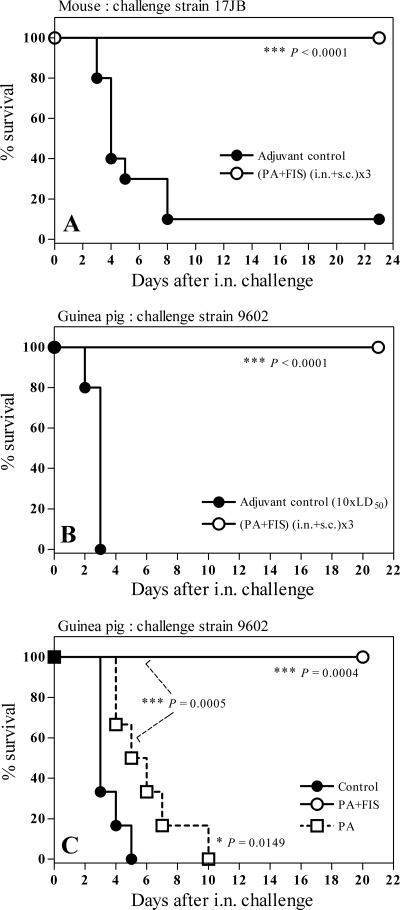FIG. 4.
Protection of mice and guinea pigs after a double immunization with PA-FIS. (A) Mice were immunized both s.c. and i.n., (s.c.+i.n.)×3, by the optimized protocol. Three weeks after the second booster injection all animals (10 per group) were i.n. infected with 33 LD50 (8.3 × 107) of B. anthracis 17JB spores. Mice were observed for 23 days after exposure. The number of mice in the PA-FIS group surviving the challenge was statistically greater than that in the adjuvant control group (***, P < 0.0001). Guinea pigs were immunized with either PA-FIS or PA alone both s.c. and i.n.. i.e., (s.c.+i.n.)×3. Three (B) or two (C) weeks after the booster injection, all animals (six per group) were i.n. infected with either 100 LD50 (8 × 106) (B) or 5 LD50 (4 × 105) (C) of B. anthracis 9602 spores. Guinea pigs were observed for 21 days after exposure. In both cases, the number of guinea pigs in the PA-FIS group surviving the challenge was significantly higher than that in the adjuvant control group (***, P < 0.001 [B]; ***, P = 0.0004 [C]). In the experimental results shown in panel C, the number of animals in the PA-FIS group surviving the challenge was significantly higher than that in the PA group (***, P = 0.0005). Also, in panel C the number of survivors in the PA group was significantly higher than that in the adjuvant control group (*, P = 0.0149).

